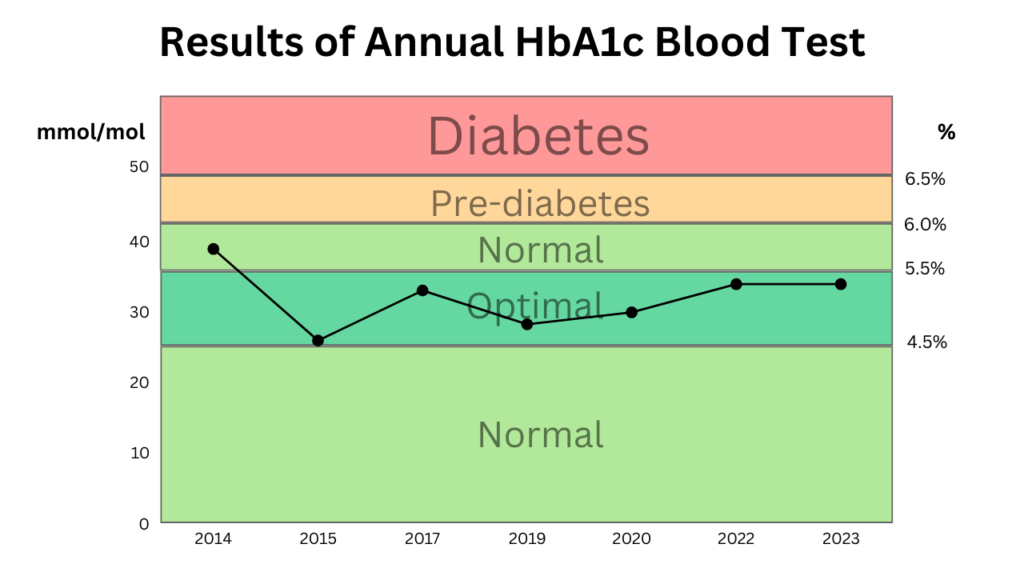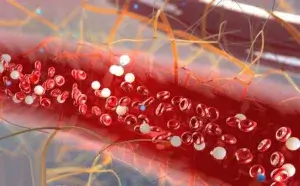Type 2 Diabetes is a health condition which means there is too much sugar circulating in your blood stream. You can get a snapshot of your blood sugar by measuring glucose levels, but a longer term measurement involves something called HbA1c.
What is HbA1c
HbA1c is short for Haemoglobin A1c, and an HbA1c test measures the amount of blood glucose (sugar) attached to your Haemoglobin. Haemoglobin itself is a part of your red blood cells, which have an average lifespan of 115 days. Therefore by measuring HbA1c you can infer your average blood glucose levels in the last ~3 months.
In summary:
- If you want to know your blood glucose level at an exact moment in time, you need to measure Glucose
- If you want to know your average blood glucose levels in the last few months, you need to measure HbA1c
How to measure HbA1c
The good news is that HbA1c is a really common blood test that physicians will use to help diagnose diabetes. If you are at higher risk of diabetes, for example a family history of diabetes or being over the age of 45, your doctor may test you as part of a regular check up. Otherwise, home testing kits can be ordered online for £30-40 with blood drawn via a finger prick.

What do my results mean
There are certain conditions where the result of the test may not be accurate. This includes existing pancreas or kidney problems, being HIV positive, taking medication that affects blood glucose, and recent or current pregnancy.
If you don’t have any contraindications, the following values are used to categorise your result:
- Optimal range: 4.5 to 5.4% (26 to 36 mmol/mol)
- Normal range: Under 6% (<42 mmol/mol)
- Pre-diabetes: 6.0 to 6.4% (42 to 47 mmol/mol)
- Diabetes: 6.5% or higher (48+ mmol/mol)

Tracking HbA1c over time
If your results are optimal, it may only make sense for you to test yourself once a year. The closer you are to pre-diabetes or diabetes, the shorter the time in which you would potentially take to reach that level.
I have been tracking my HbA1c levels since 2014 and the results can be seen below. I would consider my diet to be generally healthy and I exercise frequently, yet at one point my HbA1c was as high as 39 mmol/mol, with 42 being the start of pre-diabetes.

Additionally, there are certain factors that can increase your risk of type 2 diabetes:
- Being overweight or obese
- A sedentary lifestyle
- Eating a diet rich in sugary and processed foods
- Having a family history of type 2 diabetes
- Being over the age of 45
- Have been diagnosed with Non-Alcoholic Fatty Liver Disease (NAFLD)
If you tick one or more of those boxes and are yet to have your HbA1c measured, it’s worth finding it out. Common symptoms to watch out for are frequent urination, particularly at night, increased levels of thirst, tiredness and delayed wound healing.
Type 2 diabetes can have serious health consequences and it’s very common, so it’s absolutely worth getting yourself checked. In developed nations it’s estimated that 1 in 3 people living with type 2 diabetes don’t even know they have it, and around 1 in 9 of the adult population are living with pre-diabetes.

